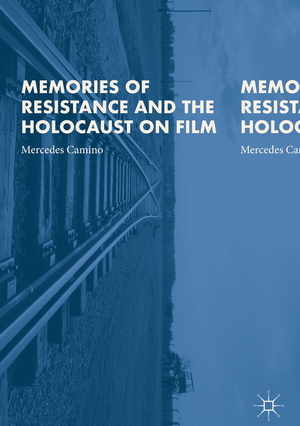Memories of Resistance and the Holocaust on Film
Autor Mercedes Caminoen Limba Engleză Hardback – 22 iun 2018
Preț: 590.63 lei
Preț vechi: 694.86 lei
-15% Nou
Puncte Express: 886
Preț estimativ în valută:
113.01€ • 117.100$ • 93.54£
113.01€ • 117.100$ • 93.54£
Carte tipărită la comandă
Livrare economică 04-18 aprilie
Preluare comenzi: 021 569.72.76
Specificații
ISBN-13: 9781137499684
ISBN-10: 1137499680
Pagini: 288
Ilustrații: X, 267 p. 19 illus., 8 illus. in color.
Dimensiuni: 148 x 210 x 17 mm
Greutate: 0.6 kg
Ediția:1st ed. 2018
Editura: Palgrave Macmillan UK
Colecția Palgrave Macmillan
Locul publicării:London, United Kingdom
ISBN-10: 1137499680
Pagini: 288
Ilustrații: X, 267 p. 19 illus., 8 illus. in color.
Dimensiuni: 148 x 210 x 17 mm
Greutate: 0.6 kg
Ediția:1st ed. 2018
Editura: Palgrave Macmillan UK
Colecția Palgrave Macmillan
Locul publicării:London, United Kingdom
Cuprins
1. Introduction.- 2.The Civilian Resister (1942-69).- 3. The Partisan (1943-74).- 4. The Collaborator (1969-74).- 5. Holocaust Testimony: Survivors, Ghosts and Revenants (1947-2002).- 6. Righteous Gentiles (1987-2011).- 7. The Jewish Resister (1987-2015).- 8. Conclusion: Chronotopes and Grey Zones.
Notă biografică
Mercedes Camino is Professor of History at Lancaster University, UK. She has published five monographs, one edited book and more than fifty articles on the topics of colonialism and 20th century conflicts.
Textul de pe ultima copertă
This book investigates cinematic representations of the murder of European Jews and civilian opposition to Nazi occupation from the war up until the twenty-first century. The study exposes a chronology of the conflict’s memorialization whose geo-political alignments are demarcated by vectors of time and space—or ‘chronotopes’, using Mikhail Bakhtin’s term. Camino shows such chronotopes to be first defined by the main allies; the USA, USSR and UK; and then subsequently expanding from the geographical and political centres of the occupation; France, the USSR and Poland. Films from Western and Eastern Europe and the USA are treated as primary and secondary sources of the conflict. These sources contribute to a sentient or emotional history that privileges affect and construct what Michel Foucault labels biopolitics. These cinematic narratives, which are often based on memoirs of resistance fighters like Joseph Kessel or Holocaust survivors such as Primo Levi and Wanda Jakubowska, evoke the past in what Marianne Hirsch has described as ‘post-memory’.
Caracteristici
Elaborates a cultural history of the Holocaust and resistance in WWII Offers an original treatment of films as historical sources (both primary and secondary) Investigates WWII as a civil war through real and imagined roles of civilians in resistance and the Holocaust Establishes chronotopes in Memorialization of Resistance in WWII and the Holocaust
